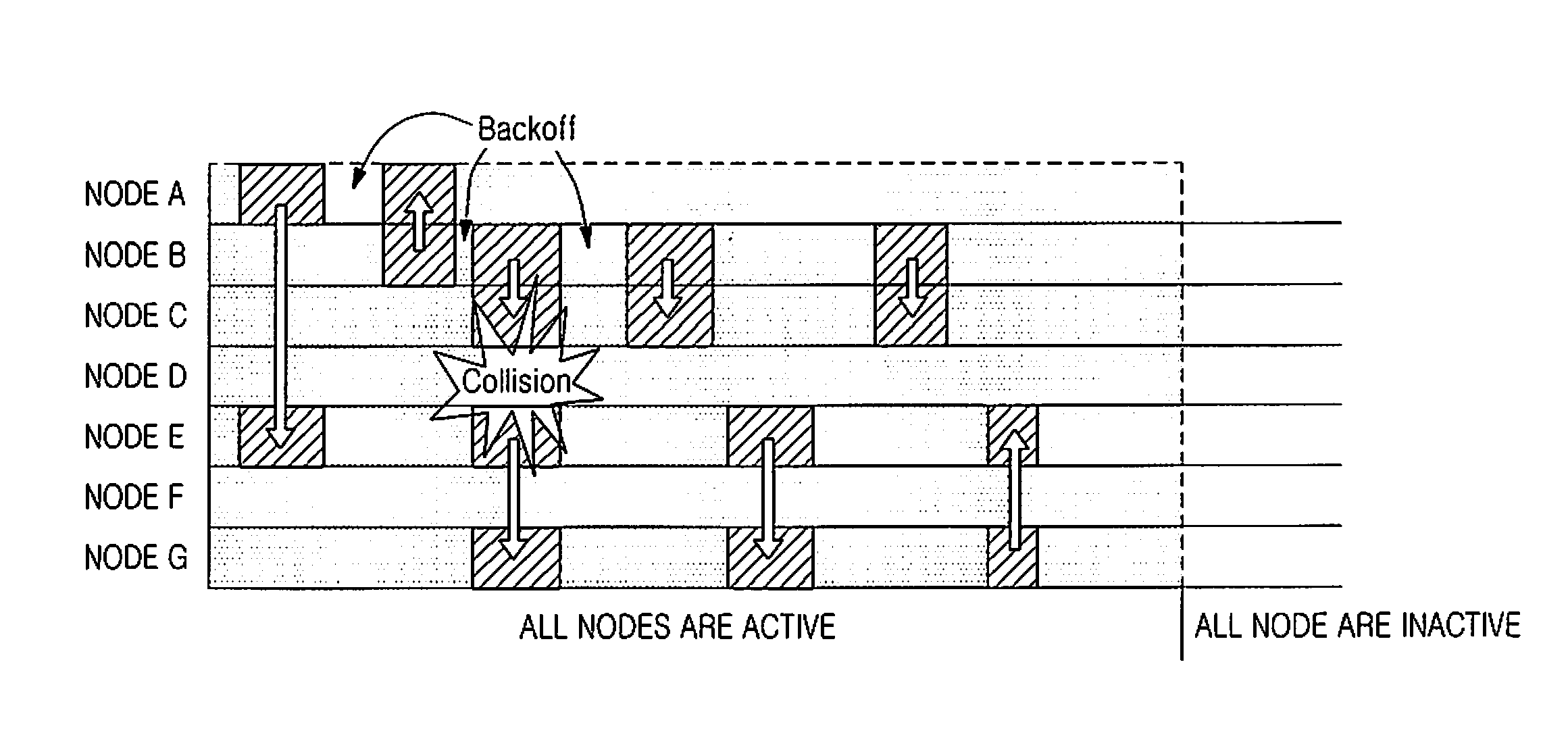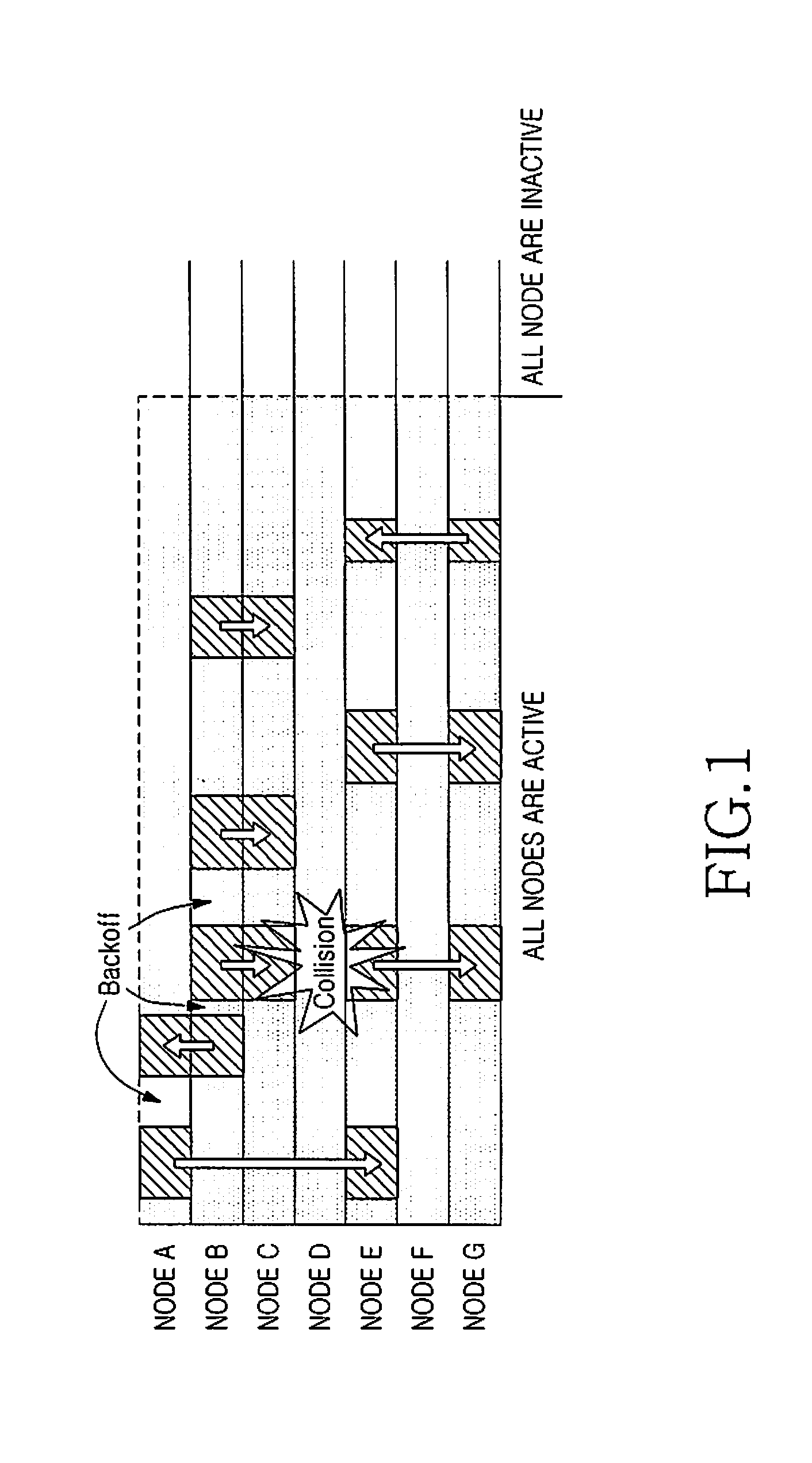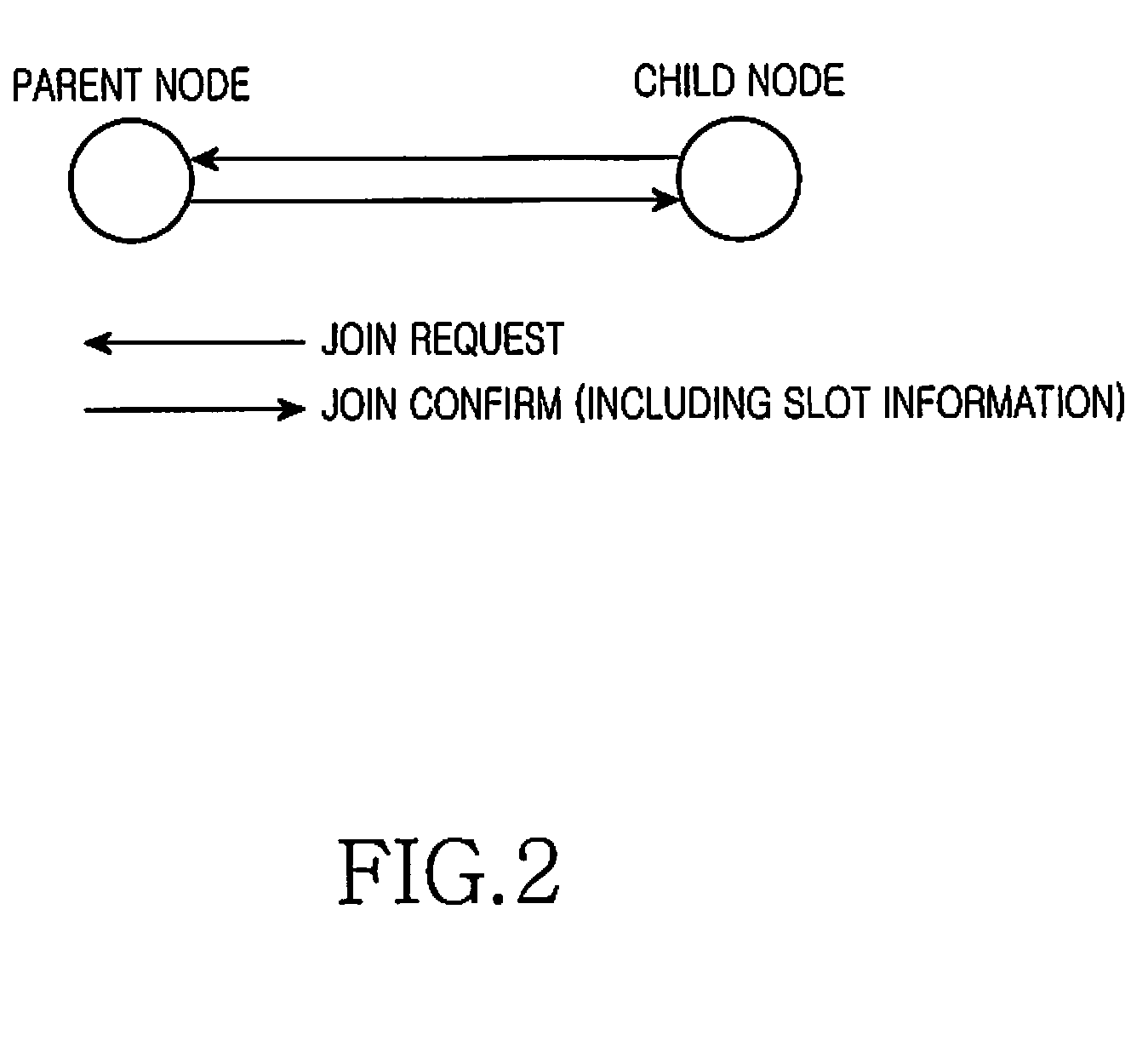Method for power consumption in wireless sensor network
a wireless sensor and wireless sensor technology, applied in the field of wireless sensor networks, can solve the problems of difficult or impossible replacement of the exhausted battery of the node with a new battery, the most energy-consuming operation of transmitting/receiving packets, and the difficulty of managing the operator, so as to reduce unnecessary power consumption, reduce power consumption in the wireless sensor network, and reduce the effect of unnecessary power consumption
- Summary
- Abstract
- Description
- Claims
- Application Information
AI Technical Summary
Benefits of technology
Problems solved by technology
Method used
Image
Examples
Embodiment Construction
[0027]Embodiments of the present invention are described in detail with reference to the accompanying drawings. The same or similar components may be designated by the same or similar reference numerals although they are illustrated in different drawings. Detailed descriptions of constructions or processes known in the art may be omitted to avoid obscuring the subject matter of the present invention.
[0028]The present invention provides a method for reducing power consumption in a wireless sensor network. Also, the present invention provides a method for reducing unnecessary power consumption by using a TDMA scheme in a wireless sensor network. In the following description, it is assumed that a wireless sensor network to which the present invention is applied includes fixed sensor nodes (hereinafter referred to as “nodes”) and one fixed sink node collecting sensing data from the nodes.
[0029]An operation of the present invention is largely divided into an “initial network setting proc...
PUM
 Login to View More
Login to View More Abstract
Description
Claims
Application Information
 Login to View More
Login to View More - R&D
- Intellectual Property
- Life Sciences
- Materials
- Tech Scout
- Unparalleled Data Quality
- Higher Quality Content
- 60% Fewer Hallucinations
Browse by: Latest US Patents, China's latest patents, Technical Efficacy Thesaurus, Application Domain, Technology Topic, Popular Technical Reports.
© 2025 PatSnap. All rights reserved.Legal|Privacy policy|Modern Slavery Act Transparency Statement|Sitemap|About US| Contact US: help@patsnap.com



